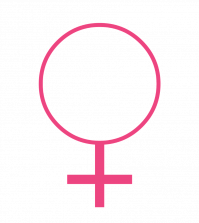- Finding Unshakable Power in a World That Wants to Pull Us ApartPosted 6 months ago
- What could a Donald Trump presidency mean for abortion rights?Posted 6 months ago
- Financial Empowerment: The Game-Changer for Women in Relationships and BeyondPosted 7 months ago
- Mental Health and Wellbeing Tips During and After PregnancyPosted 7 months ago
- Fall Renewal: Step outside your Comfort Zone & Experience Vibrant ChangePosted 7 months ago
- Women Entrepreneurs Need Support SystemsPosted 7 months ago
UN Women focusing on violence prevention with children

from UNWomen.org.
Violence against women and girls is rooted in gender-based discrimination and social norms and gender stereotypes that perpetuate such violence. Given the devastating effect violence has on women, efforts have mainly focused on responses and services for survivors. However, the best way to end violence against women and girls is to prevent it from happening in the first place by addressing its root and structural causes.
Prevention should start early in life, by educating and working with young boys and girls promoting respectful relationships and gender equality. Working with youth is a “best bet” for faster, sustained progress on preventing and eradicating gender-based violence. While public policies and interventions often overlook this stage of life, it is a critical time when values and norms around gender equality are forged.
Prevention means making the home and public spaces safer for women and girls, ensuring women’s economic autonomy and security, and increasing women’s participation and decision-making powers—in the home and relationships, as well as in public life and politics.Working with men and boys helps accelerate progress in preventing and ending violence against women and girls. They can begin to challenge the deeply rooted inequalities and social norms that perpetuate men’s control and power over women and reinforce tolerance for violence against women and girls.
Awareness raising and community mobilization, including through media and social media, is another important component of an effective prevention strategy.
Education for prevention
UN Women, in partnership with the World Association of Girl Guides and Girl Scouts (WAGGGS) has developed a global non-formal education curriculum to engage young people in efforts to prevent and end violence against girls and women.
A first of its kind, “Voices against Violence” is a co-educational curriculum designed for various age groups ranging from 5 to 25 years. The youngest groups may start out with storytelling and games that prompt them to think about gender bias and stereotypes, while older age groups can organize poster competitions, visit and volunteer with local shelters, or develop local community-based campaigns and projects to address specific forms of violence against girls and women.
Ready to start your own “Voices against Violence” journey? Download the handbook and sample activities from their website.
Working with men and boys
At a regional level, UN Women supports Partners for Prevention (P4P), a programme that provides new knowledge and technical support to prevent gender-based violence. The Programme’s long-term goal is to reduce the prevalence of gender-based violence through behaviour and attitudinal change among boys and men, increase institutional capacity and facilitate policy enhancements.
At a national level, UN Women supports a range of prevention activities, supporting research to get data on the attitudes, perceptions and behaviour of men and boys as well as young people related to various forms of violence; supporting advocacy, awareness-raising, community mobilization and educational programmes, as well as legal and policy reforms.
See more at: www.unwomen.org






